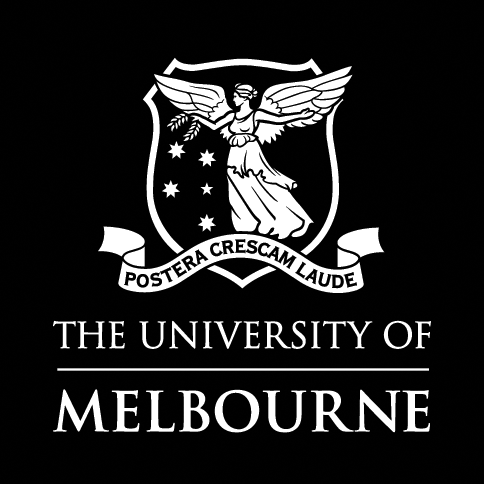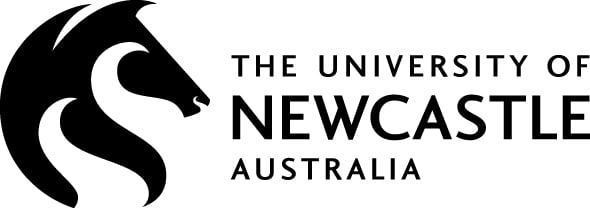The 2024 AASA Education Prize honours academics who demonstrate exemplary leadership in cultivating a positive culture within architectural education and prioritising student wellbeing – and videos submitted by applicants show what they do and why.
The AASA Education Prize seeks to “celebrate, reward and disseminate innovative learning and teaching practices, that speak to the specific and exceptional culture of architectural education in our region.” In 2024, the Prize focuses on teaching practices that support student wellbeing, and is aligned with the the culmination of the Wellbeing of Architects: Culture, Identity + Practice research project.
The 2024 Prize was awarded to Charity Edwards of Monash University, with shortlisted projects by Dr Endriana Audisho (UTS); Dr Parisa Ziaesaeidi, Rob Meyerson and Vesna Trobec (Western Sydney University); and Mia Kealy (University of Tasmania).
Watch their video presentations and read excerpts from the submissions to find out more about these exemplars.
The Salon – 2024 AASA Education Prize
Charity Edwards, Monash University
“Across three semesters in 2023–24 the Studio Stream Leader for all of Monash’s vertically integrated studios embarked upon a dramatic reset of a core studio institution – that of the review or ‘Crit’. This reset had emerged from clear shifts in culture and capacity post COVID; but was also informed by a broader and well established thread of thought around the appropriateness of the crit or review in current pedagogy, and when set and connected to internal shifts in focuses on access + equity, decolonisation of curricula, and the unsettling of established and entrenched power hierarchies. The Studio Stream Leader, therefore, set out to institute a more open, more diverse, and flatter salon model across our four undergraduate studios.
“The reset was a complex project that involved data collection, testing and work with both staff and students, and incremental roll-out of key changes across the three semesters. The results bear testament to this careful work – and student satisfaction with these changes is marked. Importantly, students are keenly aware of the purpose and potential of the salon model – how it contrasts with previous modes, and what affordances and opportunities it provides to their educational experience. There is still work to be done, but the three semesters of changes have entirely reset expectations around reviews, feedback, and presentation of work for this complex cohort.”
Charity Edwards is a Lecturer in Architecture at Monash Art, Design & Architecture faculty, a registered architect, and geographer. She has practiced architecture for over 20 years and collaborates with artists, scientists, and communities to create creative spaces, landscapes, objects, and urban strategy. She is an active ‘re-writer’ of notable Australian women architects into history as part of Parlour’s Women.Wikipedia.Design campaign. Her research highlights the impacts of urbanisation in remote and offworld environments: investigating how urban processes extend into the ocean through autonomous underwater technologies. Charity is also a co-founder and member of The Afterlives of Cities research collective, which brings together expertise in creative civic practice, architecture, digital fabrication, astrophysics, and speculative fiction to recover futures in space.
The Care-full Reading Collective
Mia Kealy, University of Tasmania
“The Care-full Reading Collective is a reading group made up of undergraduate and postgraduate Architecture students. It meets on campus weekly, in between classes, to allow members to read together.
“I started the Collective in late 2022 to respond to shifts occurring within the School in which I study and work. The shifts were defined by a series of structural changes: building renovations and campus relocations, changes to course structure, and an increased focus on linking learning with work-readiness and professional competency. The strengthening of the ideology of service provision, which positions staff as preparing students for a state of immediate economic productivity after graduation, had ushered in a learning model that left little space for forms of study
that help students become active, empathetic, and resilient citizens. Anecdotal evidence suggested the conditions generated by these shifts was exacerbating the social and physical dislocation brought on by the pandemic, increasing feelings of
unpreparedness and anxiety for students about life post-graduation, and creating a mood of instability and general state of collective exhaustion.
“While my impetus was extensive, my precarious standpoint as a PhD candidate and casual academic in a small regional Australian university meant the interventions I could feasibly make would have to be minor in scale and effect. I decided to focus on creating time and space for gathering students in an informal setting that avoided administrative and managerial systems. I wanted to explore what an unhurried, unassessed, and undisciplined form of learning might look like; to encourage students to take risks for no predetermined or measurable reward.”
Mia Kealy is a PhD candidate at the University of Tasmania. Her work explores the intersection of reading and writing architecture, creating spaces for learning through acting together and constructing knowledge through collective and care-centred processes.
Beyond Critique: A Collaborative Approach
Endriana Audisho, University of Technology Sydney
“Beyond Critique seeks to transform the traditional critique format in architectural education, addressing common issues such as high-stress dynamics, power imbalances, a lack of diversity, and the alienating use of technical jargon. To respond to these challenges, this project advocates for the design of the ‘crit’ as an
opportunity to enhance student engagement and create a sense of belonging. The approach begins by rethinking the critique space itself. Rather than simply presenting work to a panel, students co-design the critique environment, giving them ownership of the process and reducing power dynamics. In the undergraduate design studio, each tutor introduces a unique lens in response to the architectural brief, encouraging students to unite around a shared focus. Throughout the semester, students develop their projects, and by the end, they collaboratively design the critique space to reflect their collective interests and tutorial focus.
“In addition to reimagining the critique space, students explore new critique formats, such as silent reviews and student-led dialogues, where questions related to their projects drive the conversation. These formats shift the focus from evaluating final products to exploring ideas and processes, creating opportunities for deeper engagement. The student-led model promotes a supportive atmosphere, fosters constructive feedback, and alleviates the stress commonly associated with traditional critiques.
“Ultimately, Beyond Critique seeks to create a more inclusive, empowering critique experience. The project contributes to broader efforts to decolonise architectural education, ensuring students feel respected, valued, and heard throughout their academic journeys.”
Dr Endriana Audisho is a lecturer and Public Programs Director at the School of Architecture, University of Technology, Sydney (UTS). She is currently curating a public program centred on the theme of Solidarity. Her research and teaching practice draws on postcolonial and decolonial frameworks to expose spatial and social injustices, while also proposing alternative architectural narratives, fictions, and imaginaries. Endriana has exhibited in the inaugural Chicago Architecture Biennial and has received the NSW Architects Byera Hadley Travel Scholarship and the Canadian Centre for Architecture’s (CCA) doctorate research residency. She has recently published chapters in The Routledge Handbook of Architecture, Urban Space and Politics, and Living Politics in the City, and has contributed to academic journals such as Places, Interstices, and Architectural Theory Review.
Studio Indigenous: Budj Bim, Drawing a Cultural Landscape
Vesna Trobec, Rob Meyerson and Parisa Ziaesaeidi, Western Sydney University
“Studio Indigenous: Budj Bim, Drawing a Cultural Landscape is a new Master of Architecture design studio that took Western Sydney University students to a remote and culturally significant site Budj Bim in southwest Victoria. Two “Pods” were designed to support the design studio. Indigenous Pod consisted of a series of online lectures and discussions delivered primarily by Indigenous designers and professionals. Drawing Pod was a cross-disciplinary collaboration with the National Art School (NAS) where students attended experimental drawing classes that were supported by online lectures. These three components were designed and taught collaboratively by three staff and all work together to form a single subject.
“The context in which the staff members were operating, including a description of the specific challenges that have been identified and are being addressed: The Design Studio and Pods were designed to address a requirement for the Architecture school to teach Indigenous competencies to maintain its registration. The first challenge was how to teach this new content as non-Indigenous teachers in a way that was relevant, culturally sensitive and highly engaging for students. The complexity of themes and concepts covered in the design studio meant that the traditional design studio needed to be supported by different forms of teaching. Not all students had access to the same resources in terms of previous travel experience, space and materials to work with, and exposure to art practice. The challenge was to provide a learning environment that gave all students equal access to the resources and experiences required to do well in the design studio and develop as a young architect.”
Vesna Trobec combines teaching, non-traditional research, and architectural practice to advance the field of architecture. She has served as an Expert Witness in architectural cases before multiple courts in Australia. Her work in Papua New Guinea earned a World Community Architecture Award, and her drawings and projects have been exhibited across Australia, the UK, France, Serbia, and Papua New Guinea. Vesna has also received numerous awards and scholarships, enabling her to research public spaces, micro-housing, community architecture and traditional construction techniques internationally.
Rob Meyerson studied architecture and urban design at the University of Sydney, the Pratt Institute in New York and later at the Harvard Graduate School of Design, where he was a Deans Merit Scholar. Rob currently co-ordinates the first year Architecture program at WSU. Previously he worked in the Sydney offices of Bates Smart and Supercontext, and for Andrew Berman Architect in New York City. He is the founder and director of Common Office, a design studio engaged in a range of work from furniture to large scale territorial design, including research and speculative projects.
Dr Parisa Ziaesaeidi is an architect with experience in both academia and industry and holds a PhD from the Queensland University of Technology. Parisa is an Associate Fellow of the UK Higher Education Academy. Her research interests focus on social sustainability and neighbourhood design. She has experience in conducting qualitative studies using visual methods. Her expertise in this area is reflected in publications in international journals, conferences, and architectural magazines such as WAC, where she has established herself as an architectural journalist. Parisa also serves as a reviewer for several peer-reviewed journals.




















